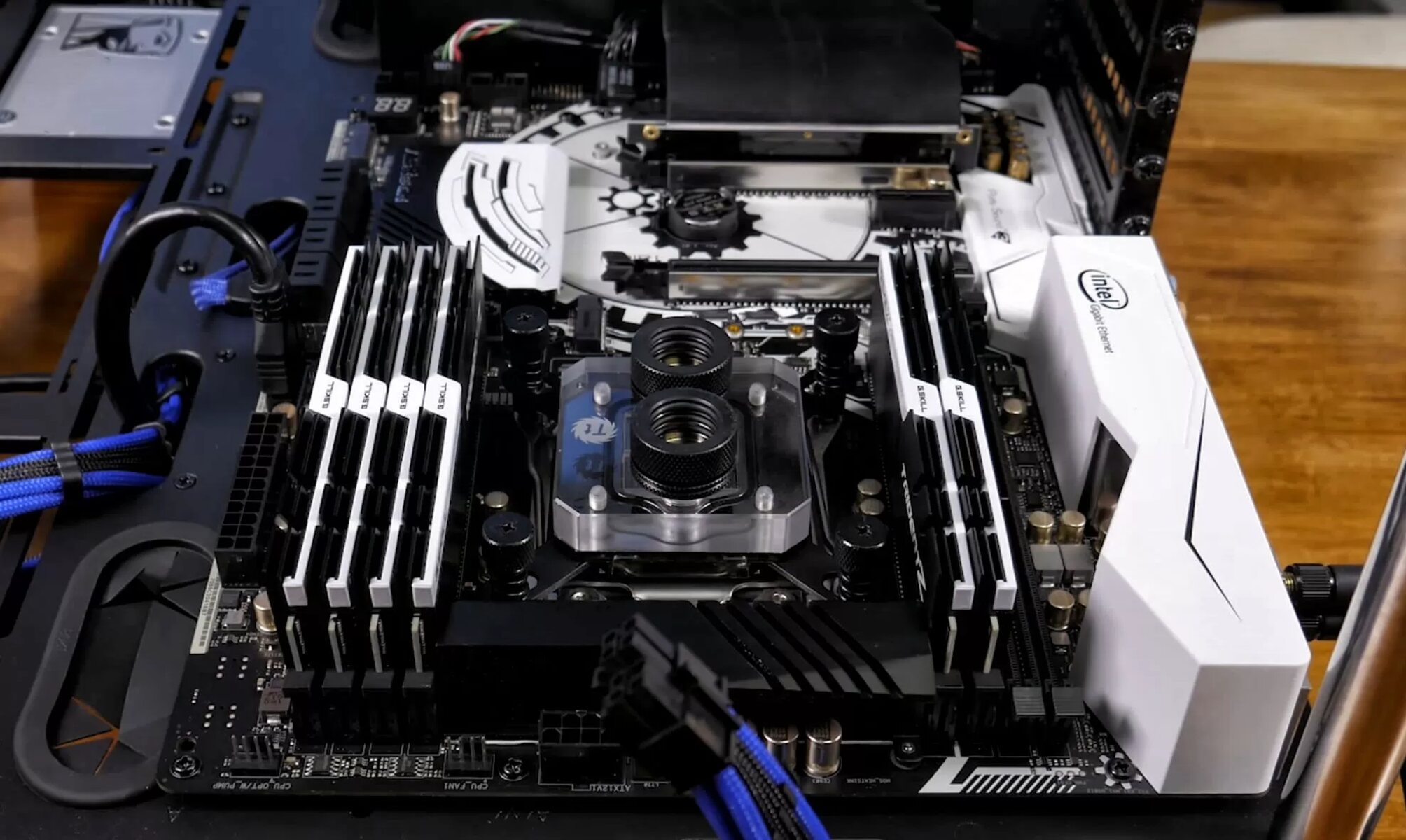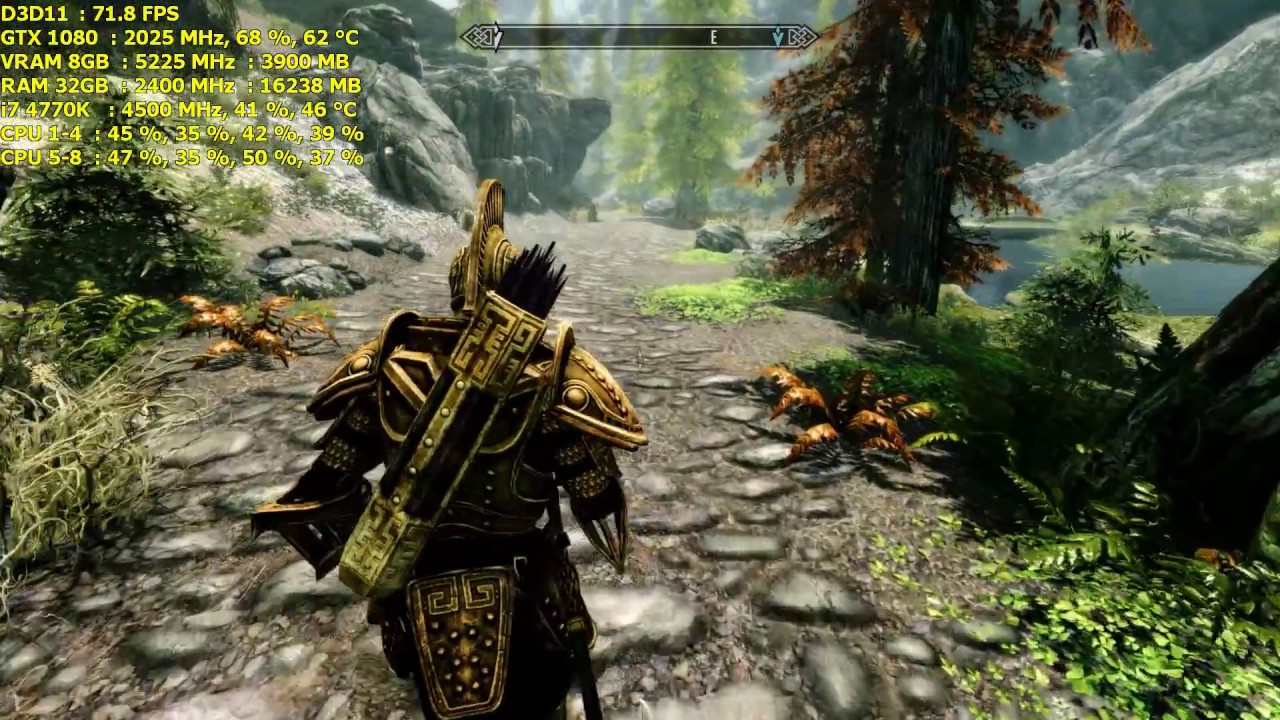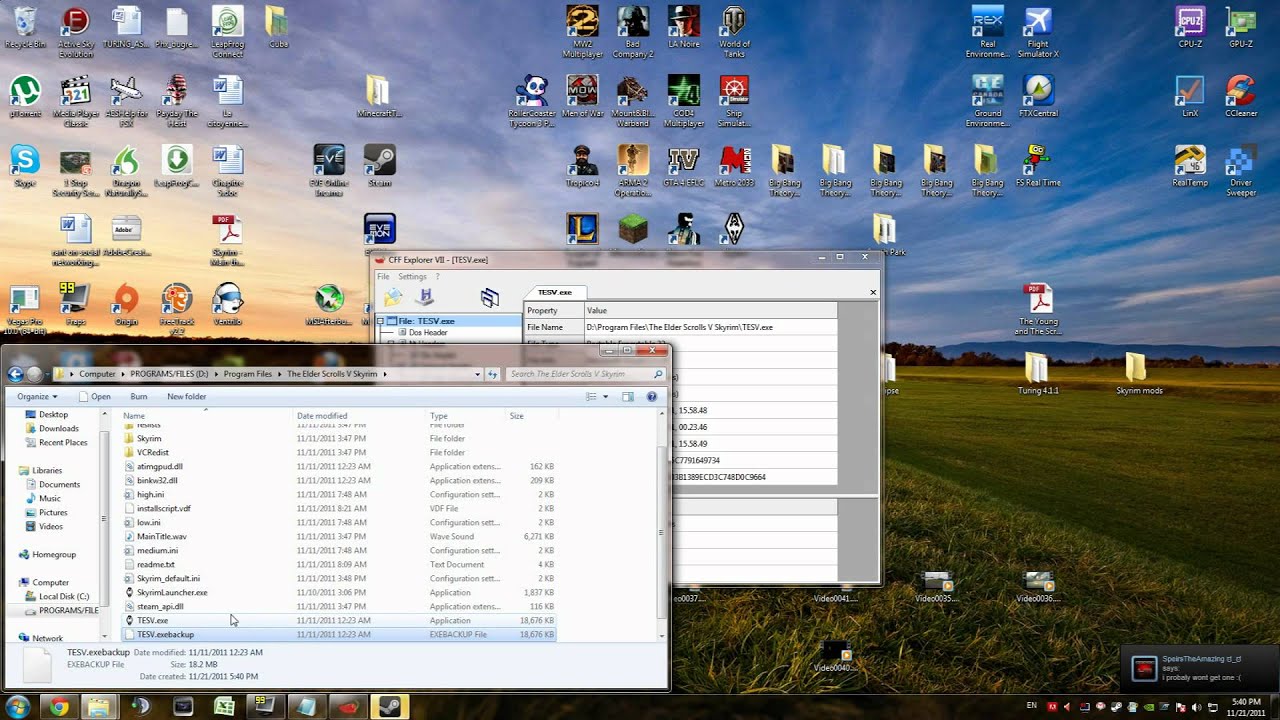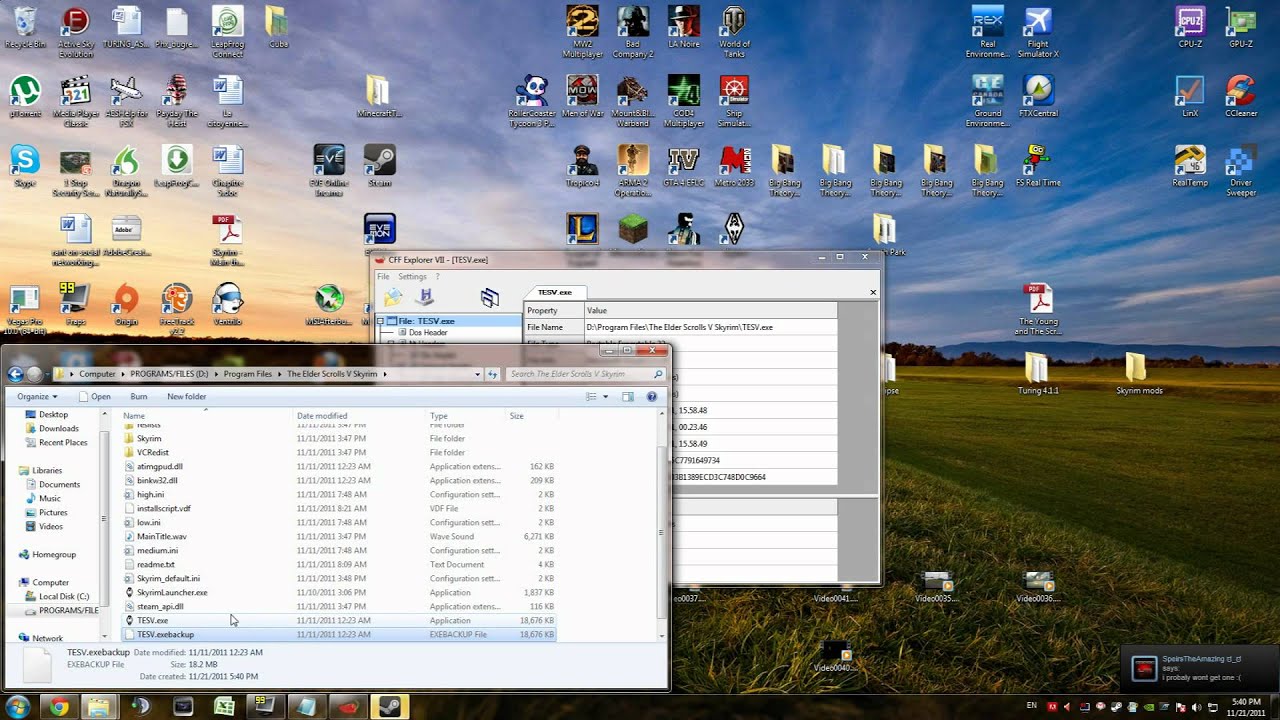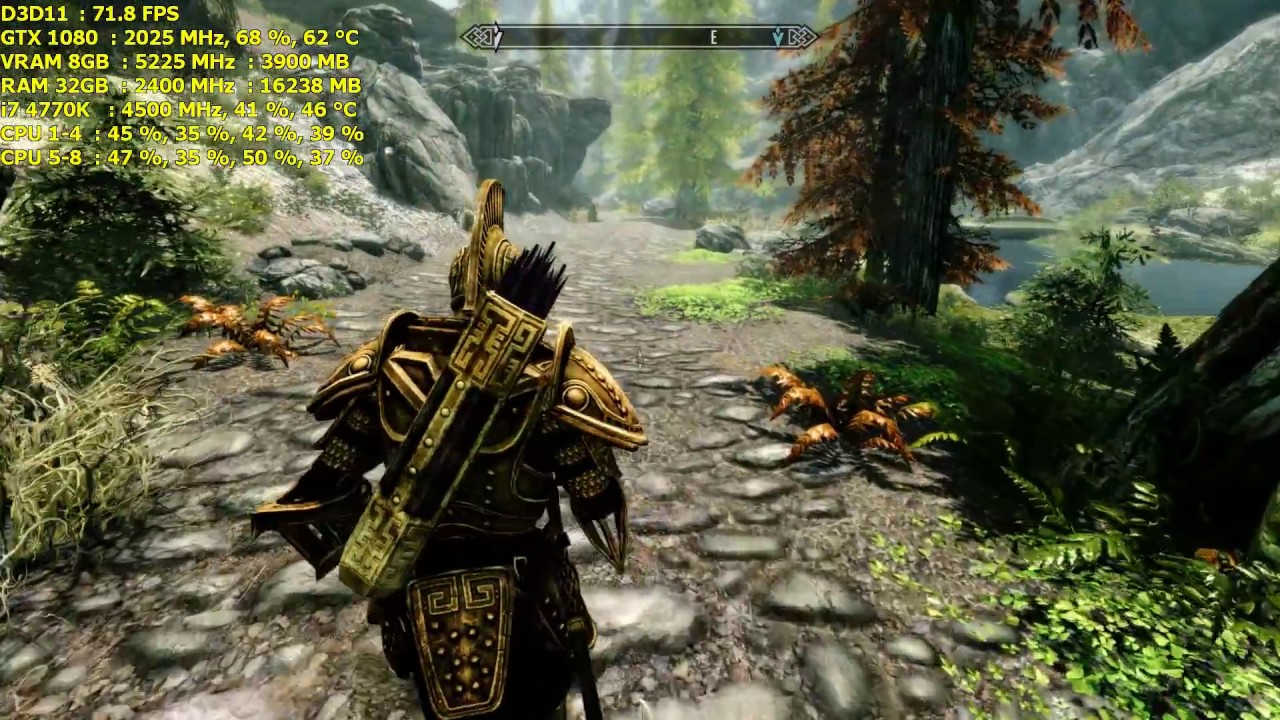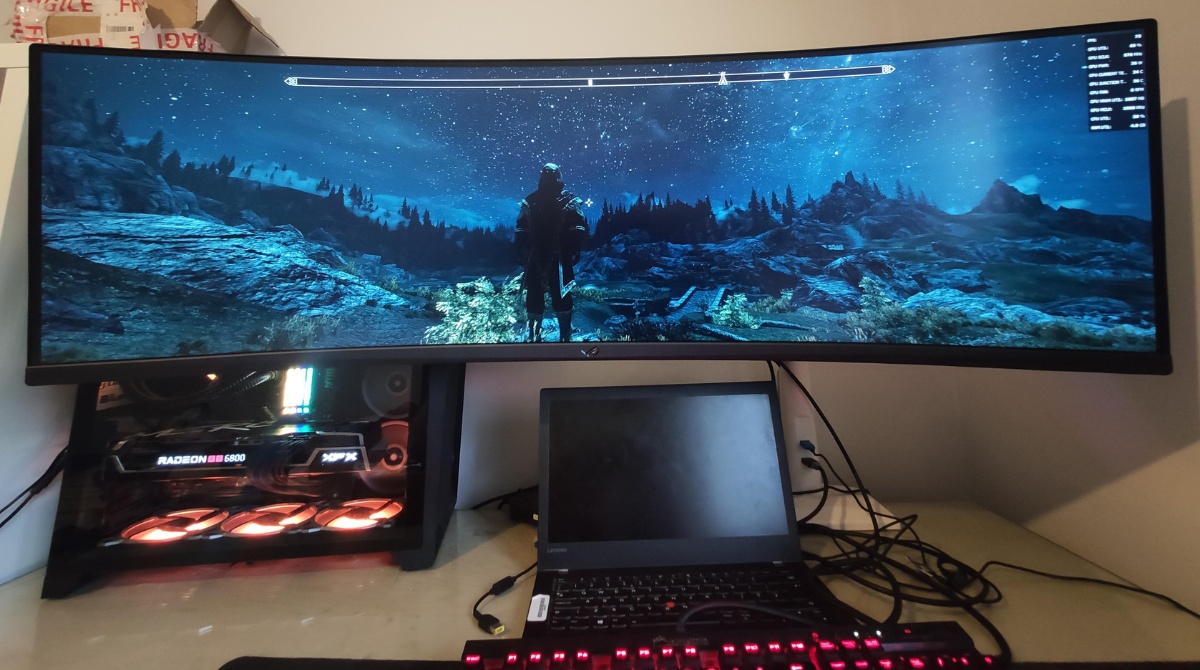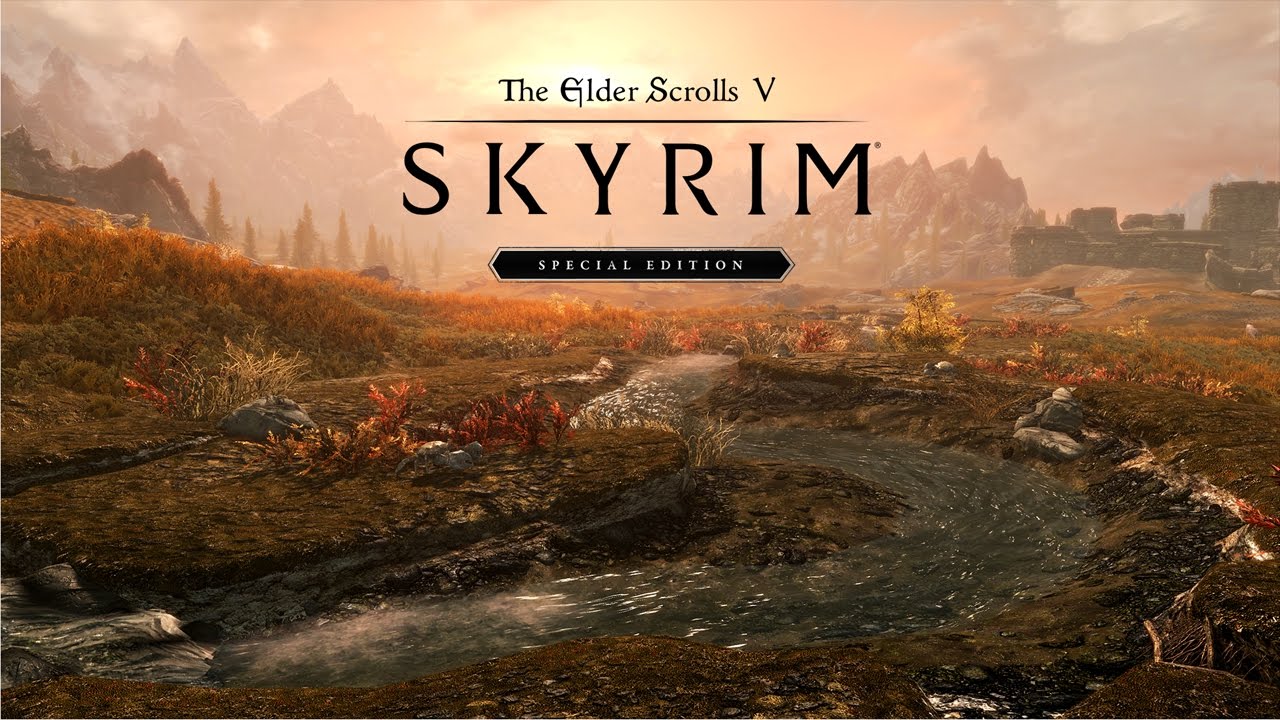Introduction
Welcome to the world of Skyrim, a vast and immersive fantasy realm filled with breathtaking landscapes, treacherous dungeons, and fascinating quests. As you embark on your epic adventure, you may encounter performance issues or notice that the game is not utilizing your computer’s resources to its full potential. One common concern is the limited use of RAM, which can lead to lagging, stuttering, and overall lower performance.
Fortunately, there are steps you can take to optimize Skyrim’s RAM usage and improve the game’s performance. In this guide, we will explore various methods and techniques to enable Skyrim to utilize more RAM, providing smoother gameplay and enhancing your overall gaming experience.
Before we dive into the specifics, it’s important to note that optimizing Skyrim’s RAM usage involves making adjustments to both the game’s settings and your computer’s settings. It may require some technical knowledge and familiarity with system configurations. However, if you follow the steps outlined in this guide, you’ll be on your way to maximizing Skyrim’s RAM utilization without compromising the integrity of your system.
Now, let’s delve into the process of checking your system requirements and making the necessary adjustments to optimize Skyrim’s RAM usage.
Checking Your System Requirements
Before proceeding with any modifications, it’s essential to ensure that your computer meets the minimum system requirements for running Skyrim. While the game can technically run on lower-spec systems, optimal performance requires meeting or exceeding the recommended specifications.
Start by checking the official system requirements provided by the game developer. These requirements typically include information about the minimum and recommended CPU, GPU, RAM, and storage capacity. Ensure that your computer meets or surpasses these specifications to avoid potential performance issues.
In addition to the official requirements, it’s worth considering the specific demands of the mods you have installed, as these can increase the system requirements. Mods that enhance graphics, add new content, or improve gameplay mechanics often require a more robust system to run smoothly. Take note of any additional requirements mentioned by the mod creators and factor them into your assessment.
Once you have confirmed that your computer meets or exceeds the necessary system requirements, you can proceed with optimizing Skyrim’s RAM usage. It’s important to note that while improving RAM usage can help enhance performance, it is not a fix-all solution. Other factors, such as CPU and GPU limitations, can also impact the game’s performance.
Now that you’ve confirmed your system meets the requirements, it’s time to explore the various techniques to adjust Skyrim’s settings and improve its RAM utilization. Let’s move on to the next section, where we will delve into adjusting Skyrim’s launcher settings.
Adjusting Skyrim’s Launcher Settings
One of the first steps you can take to optimize Skyrim’s RAM usage is by making adjustments in the game’s launcher settings. The launcher provides several options that can help improve resource allocation and performance. Follow these steps to access and adjust these settings:
- Launch the Skyrim game launcher by double-clicking the game’s shortcut or accessing it through your Steam library.
- In the launcher, click on the “Options” button to access the game’s settings.
- Go to the “Graphics” tab, where you’ll find various options related to visual settings.
- Reduce the graphics settings to a level that your system can handle comfortably. Lowering graphics settings can significantly reduce the strain on your system’s resources, including RAM.
- Consider disabling or lowering optional effects such as anti-aliasing, anisotropic filtering, or ambient occlusion. These effects can provide visual enhancements but can also put a strain on your system’s resources.
- Click on the “Advanced” button to access advanced graphics settings.
- Within the advanced settings, consider disabling features like Object and Actor Fade, Object Detail Fade, or Grass Fade. These settings control how quickly objects, actors, and grass load and unload in the game world. Disabling or reducing these settings can improve performance by reducing the number of objects that need to be loaded into RAM.
- Once you’ve made the necessary adjustments, click on “Apply” or “OK” to save the changes.
By adjusting Skyrim’s launcher settings, you can reduce the graphical demands on your system, which in turn can help optimize the usage of your computer’s resources, including RAM. However, keep in mind that visual fidelity may be sacrificed to achieve better performance. This trade-off can vary depending on your system’s specifications and personal preferences.
Next, we’ll explore the process of modifying SkyrimPrefs.ini to further enhance RAM utilization. Continue reading to learn more.
Modifying SkyrimPrefs.ini
Another method to optimize Skyrim’s RAM usage is by directly modifying the game’s configuration file, SkyrimPrefs.ini. This file contains various settings that control the game’s graphics, rendering, and performance. Follow these steps to make the necessary modifications:
- Navigate to the location where SkyrimPrefs.ini is stored. The file is typically located in the “My Documents” or “Documents” folder in your user directory.
- Make a backup copy of the original SkyrimPrefs.ini file before making any changes. This will allow you to revert back to the original settings if needed.
- Open the SkyrimPrefs.ini file using a text editor.
- Scroll down to the [Display] section, where you’ll find various settings related to graphics and performance.
- Locate the “iPreloadSizeLimit” parameter. This setting determines how much texture data Skyrim loads into RAM. Lowering this value can help reduce the strain on your system’s resources. Experiment with different values to find the optimal balance between performance and visual quality.
- Consider adjusting other parameters such as “iShadowMapResolution”, “iMaxAnisotropy”, or “iMaxDecalsPerFrame”. These settings control the quality and quantity of shadows, textures, and decals in the game, respectively. Lowering these values can reduce resource usage and improve performance.
- Save the modified SkyrimPrefs.ini file.
By modifying SkyrimPrefs.ini, you can fine-tune the game’s settings to better utilize your system’s resources, including RAM. However, it’s important to exercise caution when making these changes, as incorrect modifications can cause instability or graphical glitches. If you experience any issues, simply revert back to the original SkyrimPrefs.ini file.
In the next section, we will explore how adjusting Windows performance settings can further enhance RAM utilization for Skyrim. Keep reading to learn more.
Adjusting Windows Performance Settings
Optimizing Skyrim’s RAM usage not only involves adjusting in-game settings but also optimizing your computer’s performance settings. Windows operating systems provide various options that can help allocate resources more efficiently. Follow these steps to adjust the performance settings:
- Open the Start menu and search for “Advanced system settings.”
- Click on “View advanced system settings” to access the System Properties window.
- In the System Properties window, click on the “Settings” button under the “Performance” section. This will open the Performance Options window.
- In the Performance Options window, select the “Adjust for best performance” option, or manually choose which visual effects to disable or reduce. Disabling or reducing visual effects can help free up system resources, including RAM.
- Click on “Apply” and then “OK” to save the changes.
By adjusting the performance settings in Windows, you can allocate more resources towards running Skyrim and improve RAM utilization. Keep in mind that disabling certain visual effects may affect the overall visual experience, but it can significantly improve the game’s performance.
Next, we will explore an advanced technique called enabling Large Address Awareness, which can further enhance Skyrim’s RAM usage. Continue reading to learn more.
Enabling Large Address Awareness
Enabling Large Address Awareness is an advanced technique that allows Skyrim (or any other 32-bit application) to access more than the default 2GB of RAM. By enabling this feature, Skyrim can utilize more RAM, potentially improving performance and reducing memory-related issues. Follow these steps to enable Large Address Awareness:
- Locate the Skyrim game executable file (Skyrim.exe) in your game directory.
- Right-click on the Skyrim.exe file and select “Properties.”
- In the Properties window, navigate to the “Compatibility” tab.
- Check the box that says “Run this program in compatibility mode for:”
- Select your Windows operating system from the drop-down menu.
- Check the box that says “Run this program as an administrator.”
- Click on “Apply” and then “OK” to save the changes.
Enabling Large Address Awareness can help Skyrim access more RAM, which can enhance performance and stability. However, please note that the effectiveness of this technique may vary depending on your system configuration and the specific mods or modifications you have installed.
In the next section, we will explore the use of memory management tools to further optimize Skyrim’s RAM usage. Continue reading to learn more.
Using Memory Management Tools
In addition to adjusting settings within Skyrim itself, you can also utilize memory management tools to optimize RAM usage for the game. These tools can help allocate and free up memory more efficiently, improving overall performance. Here are a few memory management tools you can consider:
- ENBoost: ENBoost is a popular memory management tool specifically designed for Skyrim. It helps optimize the game’s memory allocation, reducing crashes and improving stability. ENBoost can be installed as a mod and provides detailed configuration options to fine-tune memory settings.
- SSME (Skyrim Startup Memory Editor): SSME is another tool that focuses on managing Skyrim’s memory allocation during startup. It helps allocate more memory to the game, reducing crashes, and improving performance. SSME can be installed as a DLL file and requires specific configuration in the Skyrim.ini file to function.
- Memory Patch (SKSE Plugin): The Skyrim Script Extender (SKSE) is a widely-used modding tool that includes a memory patch plugin. This plugin increases Skyrim’s memory allocation, allowing the game to utilize more RAM. Installing SKSE and its memory patch plugin can help improve performance and stability.
Before using any memory management tools, it’s important to read the installation and configuration instructions carefully. Improper use of these tools can lead to instability or compatibility issues. Additionally, always ensure that you download these tools from reputable sources and check for compatibility with your specific version of Skyrim.
In the next section, we will discuss the importance of restarting your computer to ensure optimal RAM usage. Keep reading to learn more.
Restarting Your Computer
After making adjustments to Skyrim’s settings and utilizing memory management tools, it’s important to restart your computer. Restarting your computer can help clear temporary files, refresh system resources, and ensure that all changes take effect properly. Here’s why restarting your computer is essential for optimizing RAM usage:
- Closing Unnecessary Programs and Processes: Restarting your computer allows you to close any programs or processes that may be running in the background and consuming system resources. This helps free up RAM and ensures that Skyrim has access to as much memory as possible.
- Clearing Cached System Files: When you restart your computer, the operating system clears temporary files and cached data, which can help free up memory and improve overall system performance. This can have a positive impact on Skyrim’s RAM utilization.
- Refreshing System Resources: Restarting your computer ensures that system resources are refreshed, which can help alleviate any issues or conflicts that may have existed prior to the changes made to Skyrim’s settings or the installation of memory management tools.
- Initializing Updated Settings: Restarting your computer allows the modified settings in Skyrim and any memory management tools to take effect properly. This ensures that the changes you made are implemented and can optimize RAM usage for the game.
It’s recommended to restart your computer after making any significant changes to Skyrim’s settings or installing memory management tools. This will help ensure that the changes are fully applied and that your system is ready to maximize RAM usage for improved gameplay performance.
Now that you have implemented various techniques to optimize Skyrim’s RAM usage, it’s time to enjoy a smoother gaming experience. Remember to periodically monitor your system’s performance and adjust the settings accordingly to maintain optimal performance.
Final Thoughts
Optimizing Skyrim’s RAM usage is crucial for ensuring smooth gameplay and better performance. By following the steps outlined in this guide, you can enhance your gaming experience and make the most out of your computer’s resources. Here are a few key takeaways:
– Check your system requirements: Make sure your computer meets or exceeds the recommended specifications for running Skyrim. Consider the additional demands of any installed mods.
– Adjust Skyrim’s launcher settings: Lower graphics settings and disable optional effects to reduce strain on your system’s resources, including RAM.
– Modify SkyrimPrefs.ini: Fine-tune the game’s settings, such as preload size limit and shadow map resolution, to optimize RAM usage.
– Adjust Windows performance settings: Reduce visual effects or select the “Adjust for best performance” option to free up system resources, including RAM.
– Enable Large Address Awareness: Allow Skyrim to access more than 2GB of RAM by adjusting compatibility settings for the game’s executable file.
– Utilize memory management tools: Install and configure tools like ENBoost, SSME, or SKSE Plugin to manage memory allocation and improve performance.
– Restart your computer: Restarting helps clear temporary files, refresh system resources, and ensure that all changes take effect properly.
Remember, optimizing Skyrim’s RAM usage is a process of trial and error. The effectiveness of different methods may vary depending on your system configuration and the specific mods you have installed. It’s always a good idea to regularly monitor your system’s performance and make adjustments as needed.
Now go forth, Dragonborn, and experience the vast world of Skyrim with improved performance and smoother gameplay!







